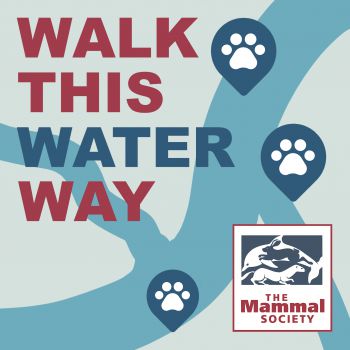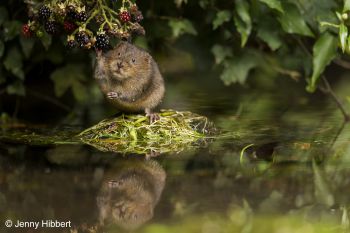Research news
Citizen scientists wanted to record sightings of mammals by waterways across the UK
By: Stephanie Allen
Last updated: Monday, 8 July 2019


© Jenny Hibbert
Members of the public are being asked to record sightings of mammals by waterways across the UK, in an effort to help with future conservation efforts.
The ‘Walk This Water Way’ project has been launched by the Mammal Society to gather much-needed data on semi-aquatic mammals that live by the country’s rivers, streams, canals or lakes.
Walkers, nature lovers or citizen scientists need to walk at least 600 metres and record sightings using the society’s Mammal Mapper app.
Fiona Mathews, Professor of Environmental Biology at the University of Sussex and Chair of the Mammal Society, said: “It is 10 years since the last national survey for otters. We are hoping to find that they have continued to recolonise our waterways, including those in urban areas.
“We also want to find out about non-native invasive species, particularly American mink and brown rats, because these can have very important impacts on our native wildlife. The water vole, for example, has declined extremely rapidly over the past 20 years.
"We would also like to keep track of beavers, which have now returned to Britain after an absence of several hundred years. Not only are individuals fairly easy to see, but tree stumps left from beaver-felling activities often are characteristically shaped, looking like a sharpened pencil."
Louisa Price, a second year biology student at the University is helping coordinate the project as a Junior Research Associate.
She said: “We’re asking people to log their sightings through the app because it also allows us to see the route that they’ve walked. This is really important as it means we can work out if areas where we have no records are due to actual absences of a species or because no-one is looking in those areas.
“Most mammals are most easily spotted early in the morning or late evening. However, the droppings are visible at any time. Helpfully for us, otters and water voles use their poo to signal to other individuals, so it is often quite easy to see — for example otters often put their spraint on rocks.”
Participants don’t have to be nature experts to log their sightings either. The app includes a guide, and photographs of animals (or their droppings!) can be uploaded for verification by experts.